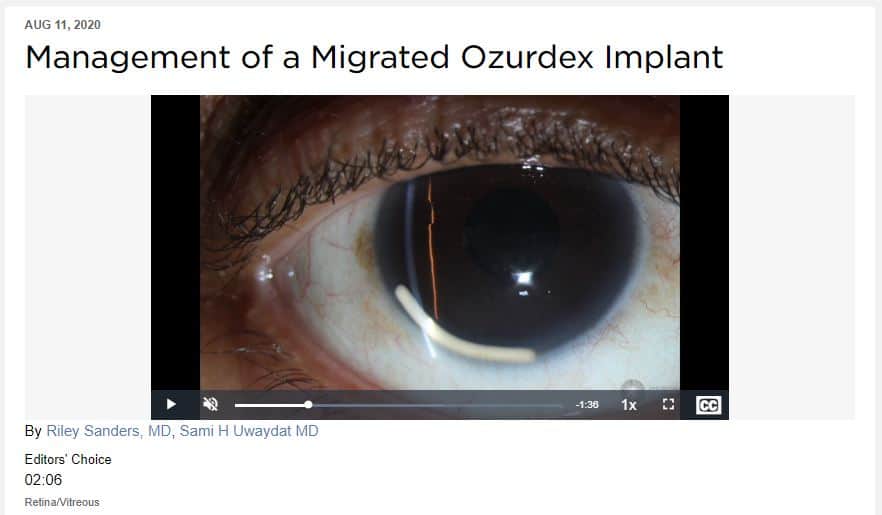Ophthalmology Residents Stay Active Despite COVID Restrictions
| The early days of the COVID-19 pandemic closed most everything, including doctor’s offices, giving many people free time to learn new skills. Internet videos on making sourdough bread raked in viewers.
But the residents in training at the Harvey & Bernice Jones Eye Institute, though unable to see patients, spent their time online learning skills to help their medical careers.
Ahmed Sallam, M.D., Ph.D., director of ophthalmology residency program in the UAMS College of Medicine, said that while clinical operations were limited from March to July, residents were encouraged to keep up their training.
“The faculty really encouraged residents to use this training time well, especially in research and in production of high-quality education videos,” he said.
He said faculty kept in touch with residents throughout with regular video conferencing. Video conferencing also allowed residents to continue their own teaching duties for medical students at the end of the spring semester.
The encouragement resulted in some 13 academic papers authored by residents being published during the limitations on clinical services.
Pandemic or no, research is always an important part of residency training, even when residents don’t plan to go into academic careers, explained Sallam.
“It’s three years in which you need to be trained on clinical duties as well as conduct research, because that teaches you to critically appraise the existing literature and how to understand what studies are important and beneficial in your practice,” he said. “There is no doubt that research advances patients ’care in so many ways.”
Another element of continued training when contact with patients was limited, was a focus on producing educational videos, made possible by the high level of technology used at Jones Eye.
“One of the strengths of our program is having high-tech video cameras in all our operating rooms, capturing all surgeries performed by both attending and resident physicians,” said Sallam. “These serve as a great tool for teaching specific technique by instruction, and also provide material for videos to provide teaching messages along with video locally and nationally.”
Residents work with faculty to develop extremely technical videos demonstrating particular surgery techniques that can be shared online with other ophthalmologists and teaching hospitals. Seven such videos produced in the spring and summer were picked up by either academic journals or the American Academy of Ophthalmology’s clinical instruction website. The latter is an elite international platform followed by more than a quarter of a million ophthalmologists worldwide.
“It’s really important that this time be used for training, so when our clinical options were limited, we wanted to use every tool available to continue teaching and education,” said Sallam.
Even with clinical operations returned to normal and residents now working regularly with patients again, the focus on research does not end, Sallam said.
In fact, it’s a hallmark of the UAMS program, as former residents have noted.
“I really got into academic writing and research during residency at UAMS,” said Joshua Hardin, M.D., who finished the program in 2018 and is now in a glaucoma fellowship at the Wilmer Institute at Johns Hopkins. “The faculty really promoted that for me in such a way that I could pursue it while not interfering with my medical and surgical training, and I appreciated that.”
Hardin finished residency with 13 medical publications without having to sacrifice time on surgical cases. In fact, he was in the 95th percentile of surgical hours nationally when he completed residency.
“I don’t know that there are many residents who could manage both, but it was all because the faculty were able to facilitate it for me.”
